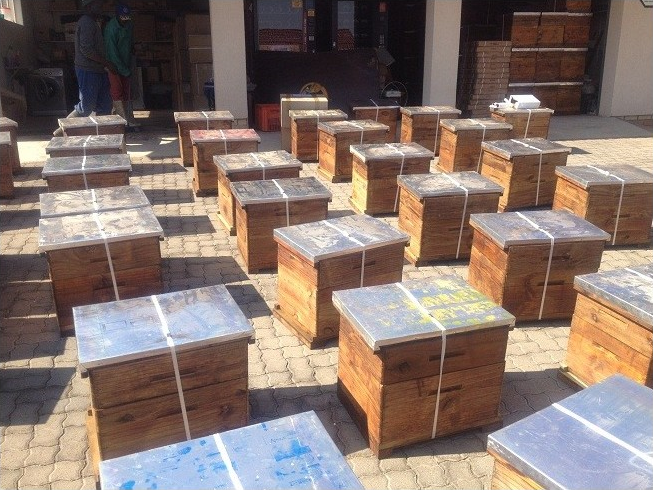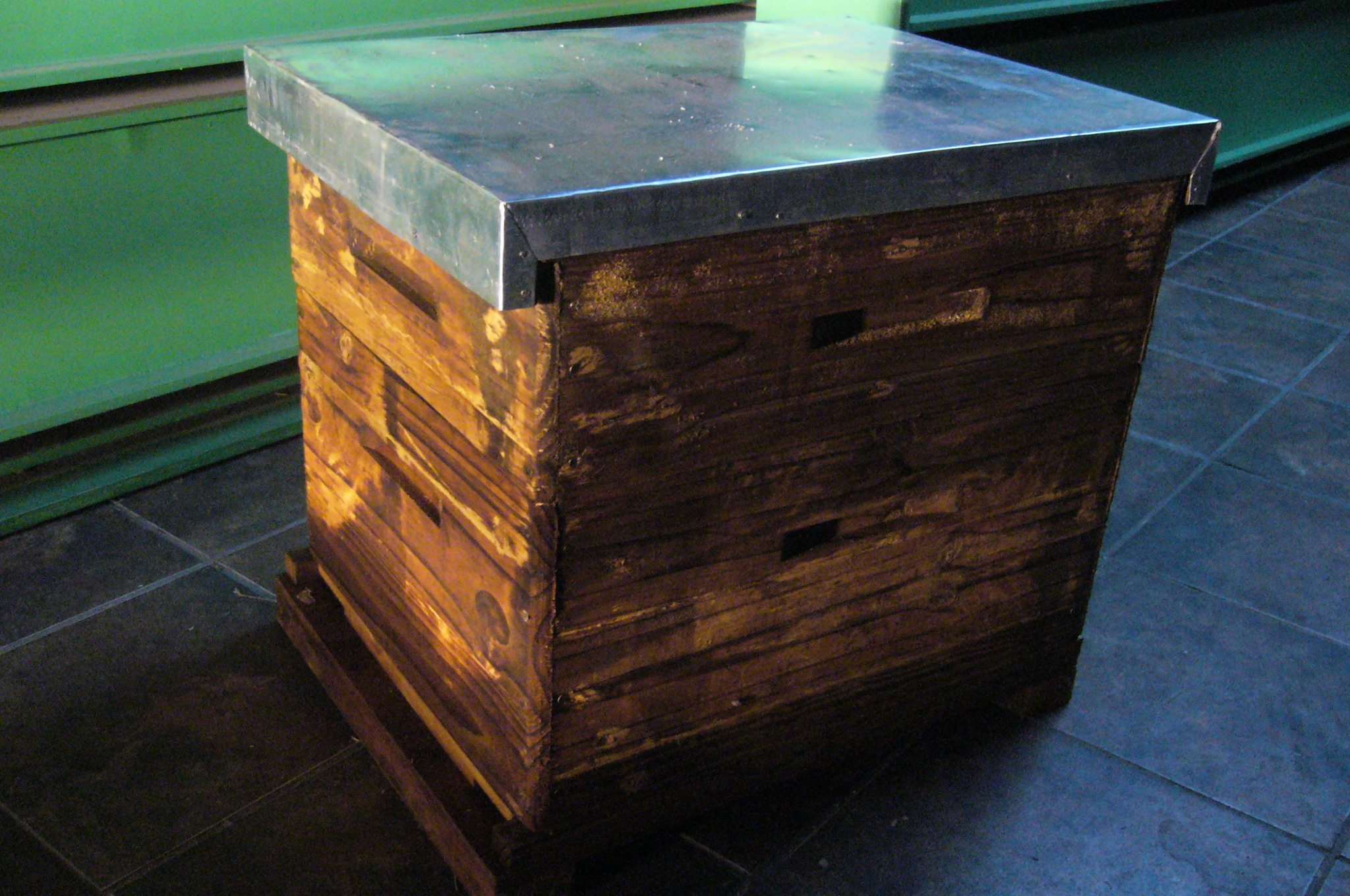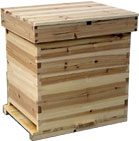Langstroth Beehive
"Bee Ready" Beehives
We supply complete beehives to the public and for projects
Classic Design
A design that has lasted centuries and still popular with beekeepers.
Bee Friendly
Manage, transport and harvest without damaging the colony.
Visit Us
26 Jakaranda Street, Coachmans Crescent, Hennopspark Centurion
+27 12 771 4288
Beehives have been around for centuries in different shapes, designs and sizes. It wasn’t until the Langstroth hive design that the beehive actually became standardised. There are still many different types of beehives in use across the world.
The mainstream beehive designs used in South Africa are the Langstroth beehive & Bee Bunka Hive. The Langstroth Beehive hasn’t been changed much since its first inception in the 1800s. Small changes have been made do incorporate aluminium covers, the type of weather protection used on the wood and the use of a queen excluder to prevent egg-laying in the super chamber.
The beehive made beekeeping manageable as before the advent of the beehive, bee colonies would be raided for their golden liquid and usually, the colony would be destroyed in the process. This created the need for a manageable method to keep bees, transport them and harvest honey from them without causing damage or destruction to the bee colony.


Not much has changed with regards to the Langstroth beehive design in the last century other than the introduction of innovations such as plastic frames, plastic queen excluders and the like. These are merely modifications of the base design. The Jackson bee hive brings new concepts and a change in approach as to the management and internal workings of the bee colony.
The Langstroth is versatile in its uses. For one, it can be used to transport honey bees all over the countryside during bee pollination services on crops for farmers. This is lucrative for both the beekeeper and the farmer in that the beekeeper is remunerated for his services and the crop farmer benefits from increased crop yield! In some cases, the increase in crop yield from honey bee pollination can be as high as 70%!
The Langstroth beehive can act as queen bee mating nuc, splitting nuc, catch box & home to honey bee colonies for years!
Langstroth beehives require internal maintenance on an annual basis in terms of the bee colony as well as weathering maintenance every few years to prevent rot and warping. Hive frames also require repair as the joints do come undone eventually and frame wires break as well. This practice is all part and parcel of beekeeping. Usually, this exercise is conducted annually either just before autumn or just after winter.
The Langstroth beehive requires accessories to maintain it as well as manage the bee colony residing inside of it. These beekeeping accessories include the queen excluder to keep the queen bee out of the super chamber that stores the honey, frame wire that provides support to the honeycomb on every frame within the beehive & finally the wax foundation sheets that provide starting points for the construction of honeycomb within the hive. Find out more on beehive accessories like the queen excluder, frame wire & wax foundation sheets by visiting beekeeping accessories now.
Our Langstroth beehives are made and available “ready-for-bees” so that when you put them out in the apiary site you only have to be concerned about getting bees!

The Langstroth beehive includes:
- Lid with aluminium cover
- Nailed Floorboard
- A single Brood chamber (deep chamber)
- A single Super chamber (shallow chamber)
- 10 Super Frames with wire & wax strips only
- 10 Brood Frames with wire & wax strips only
- All of our beehives are treated using Waksol – a mixture of beeswax and oil
- The Waksol acts as weather protection & attractant for bees!
Our beehives can be posted via the ordinary parcel service throughout South Africa for a relatively reasonable fee in addition to our beehive price. It usually takes 4-7 days to be delivered to your address and you use a tracking number to keep up to date with the hive’s progress.
We prefer not to provide flat packs or hive components unassembled to the public. The stock management of such orders is a considerable time-consuming task. Unless a fair quantity of a minimum of 15 packs is ordered we would prefer to not meet orders for flat packs. The same goes for individual beehive components. But let’s talk all the same depending on your needs.
Understandably, if beekeeping is just a hobby then 3-10 beehives are a really good number to have in your apiary. You should look at getting about 20Kg per year per hive depending on your flora quality within 5Km of the beehives. This means you actually make back your investment or money spent on setting up this new hobby within the first complete honey harvest at the end of your first year! Honey is retailing at between @ R145/Kg or $9/Kg.
It is recommended that you start beekeeping by getting hold of a copy of the Beekeeping in South Africa bee book. This investment in your new passion should be followed up by a bee course for beginners.
Once you have the theory and some practical beekeeping experience the next thing is to simply purchase the necessary beekeeping supplies like a bee suit, bee gloves, smoker, hive tool and a bee brush. Your main focus as a beginner beekeeper is to grow the number of beehives you manage.
If you want to start beekeeping commercially or as part of an existing farming activity then your only concern should be the number of hives you can purchase. Extractors and other fancy equipment are not feasible until you have at least 20 hives. Rather spend your money on investing in beehives! Once you have enough hives to harvest honey to pay for the honey extractor then consider ordering one. An alternative is that you make your own at the lowest possible cost.
